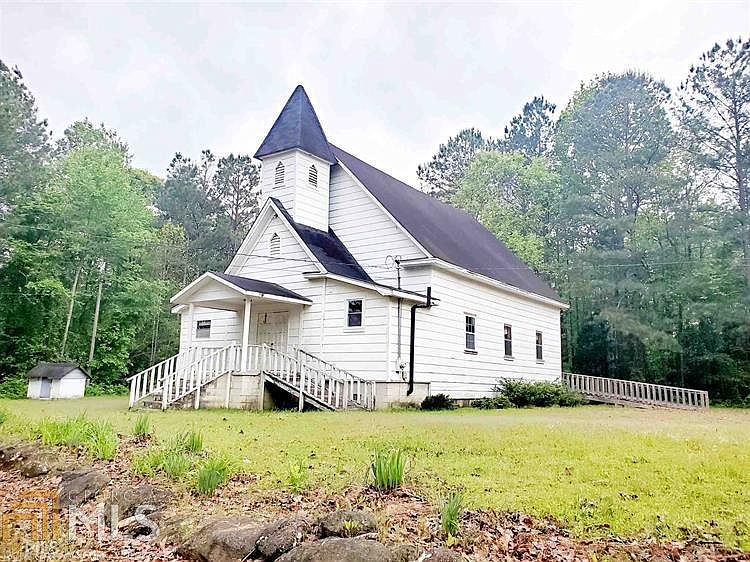Finding Sanctuary: A Guide to Affordable Churches for Sale Under $50,000
For those seeking unique and historically significant properties, a church conversion project can be a dream come true. These structures offer spacious interiors, grand architecture, and often come with sizeable plots of land. However, the high cost of purchasing a church can be a significant hurdle. This guide explores the possibilities of finding a church for sale under $50,000, opening doors (literally) for budget-minded visionaries.
Why Consider a Church Conversion Project?
Churches offer several advantages for potential buyers:
- Spacious Interiors: Churches boast large sanctuaries, perfect for creating expansive living areas or event spaces.
- Unique Architectural Features: Stained glass windows, high ceilings, and distinctive architectural details add character and historical charm.
- Large Lots: Many churches sit on sizeable plots of land, offering outdoor space for gardens, workshops, or additional living areas.
- Potential for Multiple Units: Some churches can be converted into multi-unit dwellings, creating rental income or additional living space for extended families.
Finding Affordable Churches: Unveiling the Hidden Market
While grand cathedrals might command exorbitant prices, numerous churches fall within the sub-$50,000 range. Here’s where to look:
- Rural Areas: Churches in declining rural communities may be listed for significantly lower prices compared to urban counterparts.
- Realtor Knowledge: Inform your realtor of your interest in church conversions. They may have access to off-market listings or upcoming auctions.
- Direct Contact with Parishes: Reach out to local parishes directly to inquire about churches slated for closure or deconsecration.
- Online Marketplaces: Search online real estate platforms like LoopNet or Land & Buildings, utilizing keywords like “church,” “religious property,” or “historic building.”
Important Considerations Before You Buy
While the price tag might be enticing, there are crucial factors to consider before purchasing a church under $50,000:
- Renovation Costs: Converting a church often requires extensive renovations. Factor in potential structural issues, accessibility modifications, and the cost of updating utilities and plumbing.
- Zoning Restrictions: Ensure the property is zoned for your desired use (residential, commercial, etc.) Contact your local zoning department for regulations regarding church conversions.
- Historical Significance: Certain churches might have historical designation, limiting renovation possibilities. Research any historical protections before purchasing.
- Asbestos and Lead Paint: Older buildings often contain asbestos or lead paint. Factor in potential abatement costs during renovations.
Financing and Grants for Church Conversions
Financing the purchase and renovation of a church can be challenging. Here are some potential avenues:
- Hard Money Loans: These short-term loans offer quicker access to funds but come with higher interest rates.
- Renovation Loans: Certain lenders offer loans specifically for historic property renovations.
- Grants: Organizations dedicated to historic preservation might offer grants or tax credits to assist with renovations.
Examples of Successful Church Conversions
Finding inspiration can be helpful. Here are some examples of successful church conversions:
- The Rigg House: A former church in Washington D.C. transformed into a stunning single-family home. (Source: https://www.washingtonpost.com/dc-md-va/2023/04/14/dc-foster-house-receivership/)
- Sanctuary Arts Sanctuary: A deconsecrated church in Brooklyn converted into a vibrant arts center. (Source: http://www.plymouthchurch.org/acrhitecture-and-art)
- The Old Stone Church: A 19th-century church in Wisconsin reborn as a unique bed and breakfast. (Source: https://oldestoneguesthouse.com/)
The Final Chapter: Fulfilling Your Dream
Purchasing a church under $50,000 can be a strategic move for budget-conscious visionaries. By understanding the hidden market, considering renovation realities, and exploring financing options, you can transform a piece of history into your dream space. Remember, with careful planning and a touch of imagination, a church conversion project can be a rewarding journey.
Frequently Asked Questions (FAQ)
Q: What are some of the challenges of converting a church into a home?
A: Challenges include extensive renovations, potential zoning restrictions, historical preservation limitations, and the presence of hazardous materials like asbestos or lead paint.
Q: How much does it typically cost to convert a church?
A: Costs vary greatly depending on the size, condition, and desired renovations. Budget realistically, factoring in potential hidden costs.
Going Green: Sustainable Practices for Church Conversions
While transforming a church into a functional space is exciting, it’s crucial to consider the environmental impact of your project. Here are some sustainable practices to incorporate during your church conversion:
- Adaptive Reuse: Reusing existing materials like pews, stained glass windows, or bricks minimizes waste and embodies the spirit of sustainability.
- Salvaged Materials: Seek out salvaged building materials from architectural salvage yards to add character and reduce reliance on new resources.
- Energy Efficiency: Invest in energy-efficient appliances, lighting systems, and insulation to minimize your environmental footprint and utility bills.
- Renewable Energy: Explore the possibility of installing solar panels or geothermal systems to generate clean, renewable energy for your converted church.
- Water Conservation: Implement low-flow toilets and showerheads, and consider harvesting rainwater for irrigation.
Preserving the Past, Embracing the Future
By incorporating these sustainable practices, you can ensure your church conversion project not only honors the building’s history but also contributes to a greener future. Here are some additional tips:
- Work with a Green Architect/Contractor: Seek professionals experienced in sustainable building practices to guide your project.
- Seek Local Materials: Using locally sourced materials reduces transportation emissions and supports your local economy.
- Natural Light: Maximize the use of natural light through skylights or strategically placed windows, reducing reliance on artificial lighting.
- Landscaping with Native Plants: Planting native, drought-resistant plants minimizes water usage for irrigation.
Conclusion: A Sanctuary of Sustainability
Transforming a church into a sustainable haven demonstrates respect for the environment and responsible use of resources. By following these tips and embracing eco-friendly practices, you can create a beautiful, functional, and environmentally conscious space that will serve you and future generations for years to come. Remember, with a thoughtful approach, your church conversion project can be a testament to both history and sustainability.






More Stories
Where to Watch USMNT vs Jamaica National Football Team
How I Met My Monster
How Should a Ring Fit